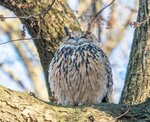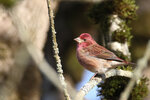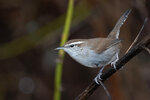



The Schmidt House hosts a monthly series of talks, and last week, I was the speaker. I had a PowerPoint presentation ready, and the slides provoked a great, wide-ranging discussion about birds. I loved it, of course, and hope all the other participants did too.
But here’s why it was a bellwether: there were 55 people in attendance.
This is local evidence that birdwatching is experiencing a renewal of public interest. Not long ago, it would be unheard of for 55 people to attend a non-Audubon Society meeting about birds. I read just recently that sales of birdseed are increasing steadily, and that in response some growers are specializing in growing the small sunflower seeds that are popular ingredients in bird food.
The PowerPoint slides of birds were provided by Liam, our 16-year-old photographer and sometimes contributor. My Schmidt House audience was older (gray-haired, like me), but the birding activities of Liam and his many teenage birding friends indicate that this resurgence is to be found among younger folks as well.
Bird watching benefited from the pandemic – people with time on their hands and no social outlet turned to the birds in their neighborhoods for company. This was especially evident at the Nisqually Wildlife Refuge, where many newly minted birders showed up.
I know from my smartphone feed that birds are getting an unprecedented amount of media coverage, (including in The JOLT). Sometimes, though, it appears that nothing goes mainstream until it penetrates the New York media market and appears in the New York Times.
In February 2023, vandals freed a large Eurasian Eagle-Owl named “Falco” from the New York Zoo. This bird piqued an outburst of nature curiosity in New Yorkers. There was an effort to recapture him, soon abandoned, and for over a year “Flaco” made his living in the wilds of Central Park and environs, much to the joy of New Yorkers. Thousands became bird watchers overnight, seeking a view of this free-ranging owl; he even had his own website tracking his wanderings. And thousands more mourned his death earlier this year, likely from the effects of ingesting rat poison.
This wasn’t the first New York incident that called attention to bird watching. In May 2020 Christian Cooper, a Black man, was birding in Central Park when he encountered a woman allowing her dog to run off-leash in a prohibited area. He asked her to leash her dog, and, in retaliation, she called the police, claiming that she was being threatened by the African American. Cooper, fortunately, filmed the incident on his phone and, in the post-George Floyd summer of 2020, the incident went viral.
Cooper, a writer, followed up with a book, Better Living Through Birding: Notes from a Black Man in the Natural World, published in June 2023. This book is about much more than a single incident in Central Park, of course, as the author has spent his life birding, including travels around the world. It introduces the reader to the world of birds and what lessons they can teach us – if we can only learn to pay attention. It’s a great book and I recommend it.
After the Schmidt House talk, someone came up to tell me how much she is enjoying the Sound ID part of the Merlin App (see https://merlin.allaboutbirds.org/). She reports sitting on her porch in the morning with the ID turned on and, after a few, receiving a report from the app about what birds are singing near her. I tried it recently with amazing results while waiting in Arkansas for the total solar eclipse to begin. If you have a smartphone, there’s no reason to be mystified by that bird song any longer. This morning, I heard Bewick’s Wren and Purple Finch males singing across the street. It’s a great bird-identifying tool and very useful.
And it’s wonderful to see more people here in our verdant home territory tuning into bird song and all its singers.
The total eclipse resulted in many good stories being told about the impact of darkness, followed by sudden daylight, on birds. One respondent with a flock of chickens, including a rooster, reported that as the eclipse progressed, the increasing darkness provoked the chickens to go to roost. But, with the sudden new dawn four minutes later, the rooster seemed stunned and began to crow with unusual vigor.
Total eclipses are rare events and it’s rarer still that one passes through multiple urban areas. Because of this, several zoos aligned with the totality path agreed to coordinate observations of animal response to the total eclipse. The results were what was expected, the animals behaved as they usually did in the evening.
Whether neighborhood roosters or zoo animals, what all these observations tell us is just how much the activity of the natural world responds to sunlight. That’s not news, of course, but we rarely get to experience it so dramatically.
George Walter is environmental program manager at the Nisqually Indian Tribe’s natural resources department; he also has a 40+ year interest in bird watching. He may be reached at george@theJOLTnews.com
Photos for this column are provided by Liam Hutcheson, a 16-year-old Olympia area birder and avid photographer.
Comments
No comments on this item Please log in to comment by clicking here